| In the afternoon we visited the Arizona Mining and
Mineral museum. The outside wall has this life size, three storey mural of a
mines dumper truck. They really are this big! | 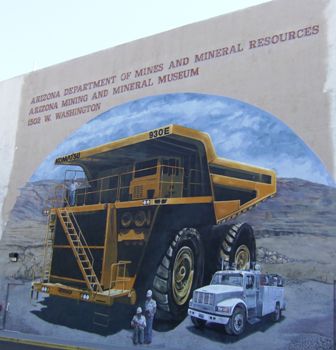 |
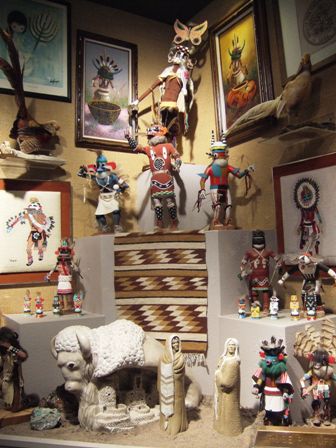 |
Admission is $2 which is very good value. The side exhibition is of mementoes
and gifts
collected over a long and distinguished political career by Rose Mofford who was
the Secretary of State and later the Governor of Arizona. She came from
Bisbee, a mining town near the Mexican border. There are lots
of kachina dolls and other examples of native American art. |
| We both liked some of the pottery which is very fine
and beautifully decorated. | 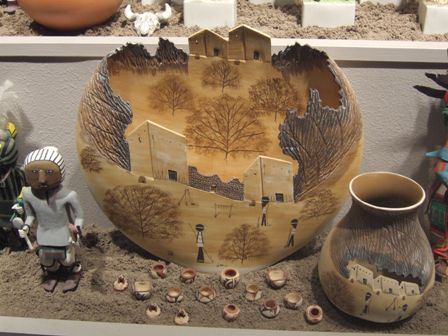 |
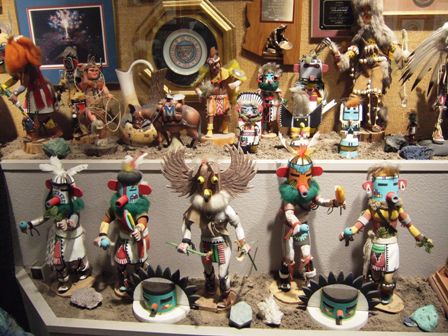 |
More dolls, each of which tells a story. They are very important in cultures
which have no written history. |
| There is a special exhibition of rocks displayed to
look like plates of food. The Steak Platter
The steak is jasper quartz, the peas are ostropod opercula (dyed snail
"trap doors"). The corn on the cob is a limonite concretion and the
mushrooms are calcite and bentonite balls. The carrots are stalactite tips. | 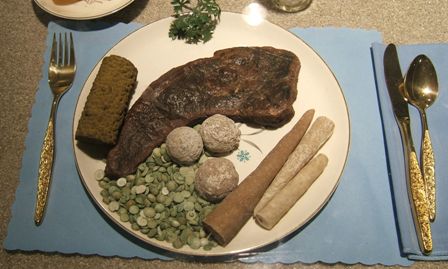 |
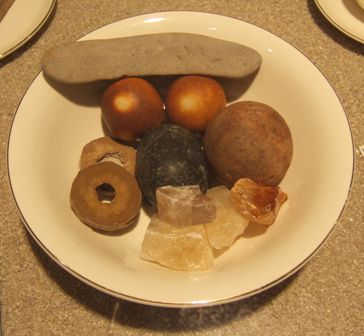 |
The Fruit Bowl. The banana is limestone, the nectarines are chert milling
balls, the kiwi is a fossil coral, the plum is quartz, the peach slices are
sandstone and the pineapple chunks are calcite. |
| An adjacent display shows the effects of lightning
striking certain formations. This fulgurite is from the White Indio
mountains in California. | 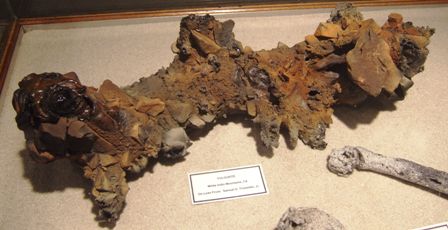 |
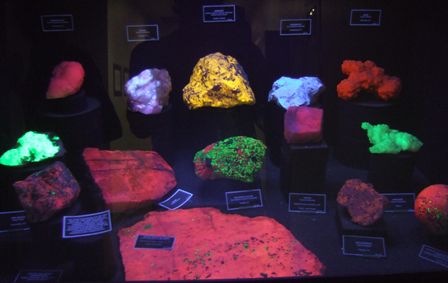 |
Around the corner (in the dark) are displays of minerals which glow
under ultra violet light. In normal daylight they actually look quite
boring. |
| Copper is one of those unusual minerals which appears
naturally in nature as well as in oxide and other forms. This piece is a mix
of copper and copper oxide. Arizona still produces most of the copper in the
USA although most of the mined ores only contain about 0.3% of copper. | 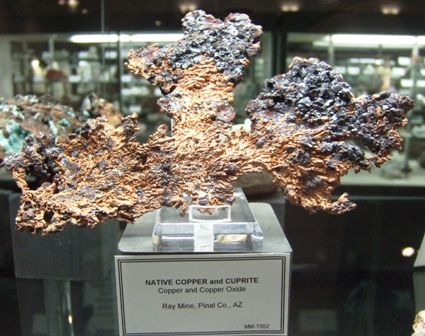 |
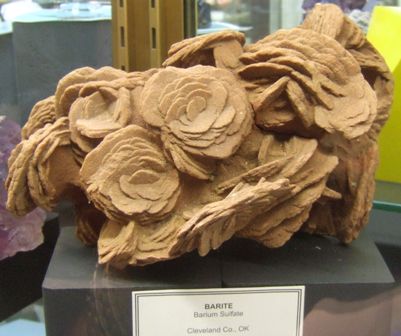 |
There are over 4500 mineral samples in the museum. This is one of the
prettier samples. It consists of barium sulphate in the crystalline form
barite. It was found in Oklahoma. |
| There is a collection of polished balls a bit like
paperweights. This one in particular looks like a planet with land and sea.
The mineral is calcium magnesium silicate hydroxide. | 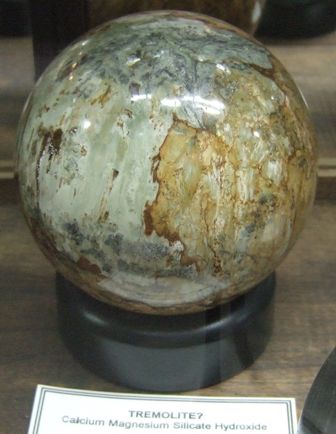 |
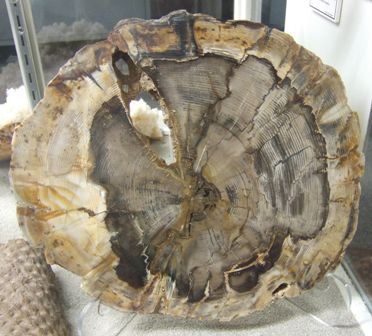 |
This is a slice of petrified wood where salts have penetrated the wood cells
over of millennia and turned it into rock. There is a whole petrified forest
in eastern Arizona which we visited last year. This sample clearly shows
growth rings, and looks very much like a felled tree would today. |
| Many of the minerals on display have been contributed
by collectors from all over the world, but the rest of these come from the
seven principal mining areas in Arizona. This colourful specimen of iron
oxide hydroxide (turgite) was found in the Bisbee area. | 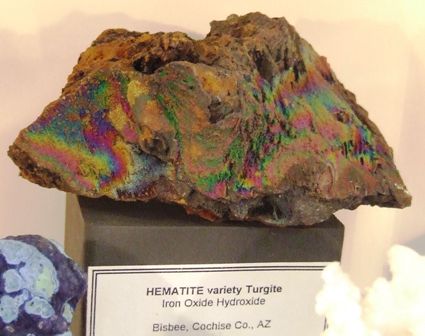 |
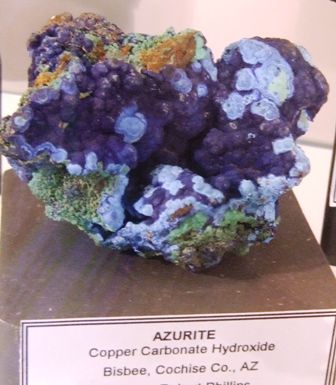 |
The mines at Bisbee primarily produce copper which more often has a rich
blue tone. This is azurite. |
| The same material but from a different mine showing
the variety of forms in which these materials can be found. The green
colouration is malachite. | 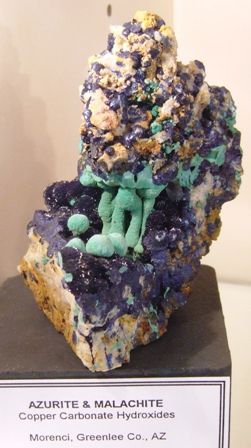 |
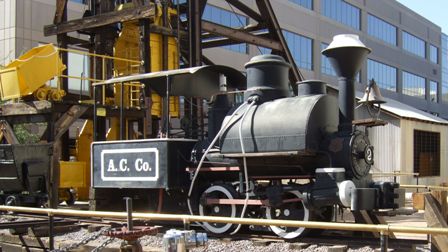 |
By now you know I'm a sucker for railway engines, even little ones like
this. |
| This bucket came from the Ray mine complex between
Superior and Winkleman in eastern Arizona. It was replaced in the 1980s by
larger shovels which hold over twice as much. The newer shovels are welded
rather than cast as this one is. This one is 13ft wide, 14ft long and 12ft
high and weighs in at about 100,000lbs empty. It holds 27cubic yards and
used to fill the dumper trucks with 4 scoops. | 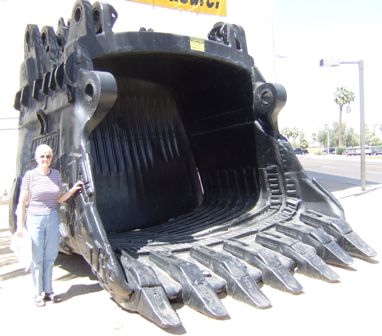 |
|